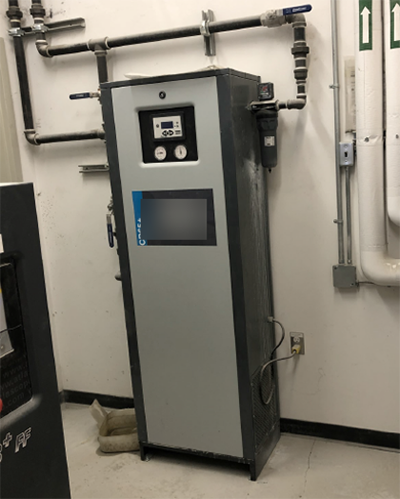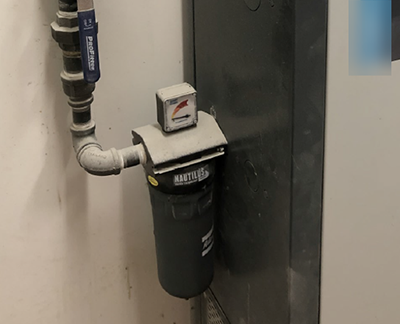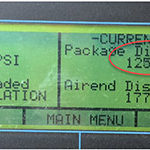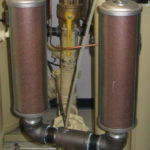
A testing building within a large industrial complex required compressed air for general uses in the processing of the materials to be tested for purity. The load on the compressed air systems is mostly compressed air powered hand tools and processing equipment, but a small amount of air is used within a laboratory where sensitive measurement instruments assess product purity.
The air compressor in the building has a refrigerated air dryer already installed within its enclosure, but staff found that in summer months there was water forming in the compressed air. So, to protect the sensitive instrumentation in the laboratory, a decision was made to install a desiccant air dryer to improve the dew point.
The dryer selected needed to be enough to handle the full 100-cfm output of the 25-hp air cooled compressor — however, the matching size was not available so the next size larger (40% larger than needed) was purchased. The dryer that was purchased was a fixed cycle unit that constantly consumes a full 20% of the air compressor output, even though the refrigerated dryer already removes 85% of the water vapor from the air. Staff members noticed that once the air dryer was installed, they started seeing occasional low pressure events.

A compressed air auditor analyzed site conditions and found that poor installation of the air compressor was to blame for the water in the compressed air. The compressor had been installed without ducting to remove the heat of compression from the room, and as a result the compressor was sucking in hot discharge air into its intake due to poor air flow patterns.
Further to this, the ventilation intake for the compressor room was located near a dusty exhaust vent, pulling contaminated air into the compressor room, clogging up the compressor cooler. The auditor noted that the extra 20 cfm compressed air demand of the dryer purge was causing the compressed air demand to exceed the capacity of the compressor, causing occasional low pressure events.
Further investigation found that the actual sensitive instrumentation air loading only consumed 4 cfm — the purge for the large air dryer installed for this load was five times the actual peak air consumption!
The auditor recommended correction of the compressor room ventilation and right sizing the desiccant air dryer. The savings from this resize is expected to save about $4,000 per year and result in improved system air pressure, very much a win-win!




Leave a Reply